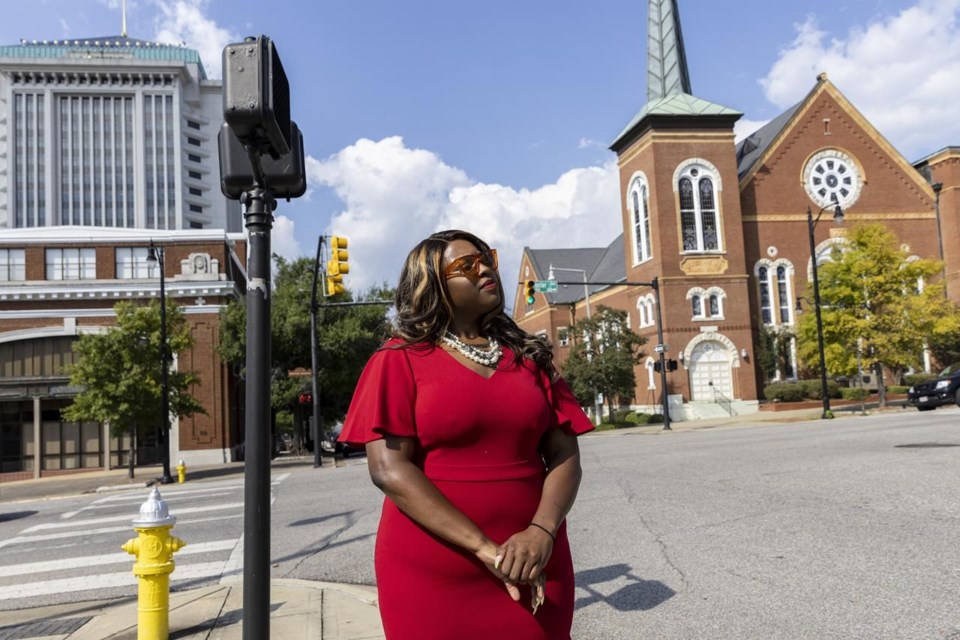BIRMINGHAM, Ala. (AP) — A federal judge said Tuesday that the court will soon adopt new congressional districts for Alabama, choosing among aimed at giving Black voters a greater opportunity to influence election outcomes in the Deep �鶹��ýAV state.
U.S. Circuit Judge Stanley Marcus, noting a ruling will be issued “shortly,” said the three-judge panel is aware of the time constraints posed by elections next year when the state's seven U.S. House seats will be on the ballot. The court could rule as early as this week.
The panel is stepping in to adopt after ruling that the Republican-controlled Alabama Legislature failed to remedy a Voting Rights Act violation when lawmakers adopted new lines this summer.
The judges said the state-drawn plan — which had one majority Black district out of seven in a state that is 27% Black — illegally diluted the political power of Black residents.
The panel, which includes two judges appointed by former President Donald Trump, last month wrote that the judges were that Alabama lawmakers flouted their instruction to create a second majority-Black district — or something close to it.
The judges received input Tuesday on three proposals presented by a court-appointed special master.
“I think this is a historic moment for Alabama, a historic moment for Black voters in the state,” said Deuel Ross, deputy director of litigation for the NAACP Legal Defense Fund, after Tuesday's hearing.
He voiced hope that new district lines could open the way for Alabama to elect a second Black congressional representative.
“There have never been two Black congressional districts and two Black members of Congress elected from Alabama. So our hope is that this remedial plan will finally provide the representation that our clients are entitled to,” Ross said.
The three proposals presented Tuesday would shift the boundaries of Congressional District 2 so that Black voters comprise between 48.5% to 50.1% of the voting-age population. By contrast, the district drafted by GOP lawmakers had a Black voting-age population of 39.9%, meaning it would continue to elect mostly white Republicans, according to an analysis by plaintiffs who filed a lawsuit over that plan.
Ross and another attorney representing Black voters in the case told the judges that two of the three proposals would fix the Voting Rights Act violation found by the court.
“We believe under either plan Black voters will be able to realize the promise of the Voting Rights Act,” attorney Abha Khanna told the panel.
The attorneys said their clients preferred one of the plans, which was also the only one to create a second majority-Black district, but both were acceptable. They objected to another they said did not provide an adequate opportunity for Black candidates. Ross said an analysis showed that four of five Black candidates, who ran statewide in the last election, would have lost in that district.
Khadidah Stone and Evan Milligan, both plaintiffs in the Alabama case, said a new map could provide an opportunity for a congressional delegation that better reflects the state's diversity.
"We've gone so long without representation in Congress. Now, there is an opportunity for our needs, and our opportunities and our perspectives to be shared,” Stone said after Tuesday's court hearing.
The new maps are to be used in the 2024 elections and come after a winding court case and a U.S. Supreme Court ruling. The three-judge panel had initially wanted for the 2022 elections, but the U.S. Supreme Court put the order as the state appealed. Justices in a 5-4 decision in June ruled against the state and the the finding of the three-judge panel. Alabama lawmakers new lines in July. The three-judge panel last month ruled the new lines, which maintained one majority-Black district, failed to remedy the problem and said it will oversee the drawing of new lines. The Supreme Court last week Alabama's request to pause the redraw while the state appeals.
The Alabama attorney general’s office told the judges that the state objects to all three plans, but had the strongest objection to the plan preferred by plaintiffs. The attorney general's office has argued that the panel is elevating racial targets over traditional redistricting principles.
“We are confident that the Voting Rights Act does not require, and the Constitution does not allow, ‘separate but equal’ congressional districts,” Alabama Attorney General Steve Marshall said in a statement last week after the Supreme Court declined to stop the redrawing of boundaries.
The judges wrote last month that they were “deeply troubled” by the actions of state lawmakers.
An attorney told the three-judge panel that the state's obstinance should not be rewarded. Khanna said Alabama’s reaction “was a model in how not to remedy” a violation of the Voting Rights Act.
Kim Chandler, The Associated Press




